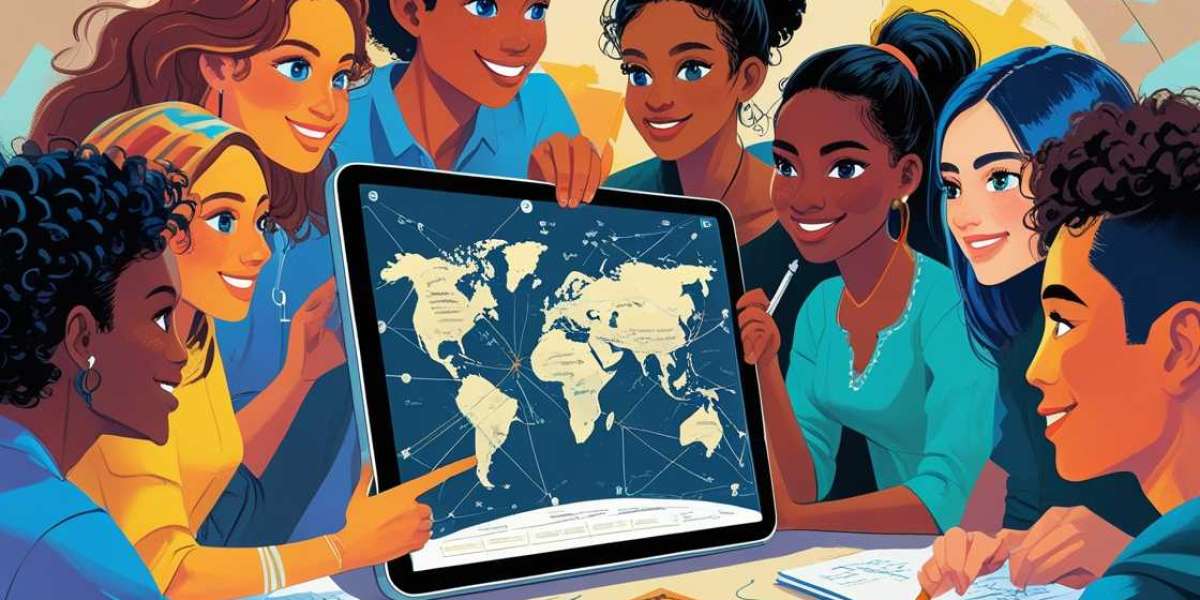Did you know that corporate eLearning takes 40%–60% less time than traditional classroom training? It's a game-changer for sure! E-learning has revolutionized the landscape of higher education, offering unprecedented opportunities for collaborative learning and cultural exchange. By transcending geographical barriers and leveraging digital technologies, e-learning has facilitated a more inclusive and diverse educational environment. This article explores the profound impact of e-learning on collaborative learning and cultural exchange in higher education, highlighting the benefits, challenges, and prospects of this transformative approach.
E-learning, or electronic learning, encompasses a broad range of educational practices that utilize digital technologies to deliver instruction and facilitate learning.
Collaborative Learning in the E-Learning Environment
1. Enhanced Accessibility and Inclusivity
E-learning provides greater accessibility to education by allowing students from diverse backgrounds and locations to participate in courses. This inclusivity fosters a rich, collaborative learning environment where students can share different perspectives and experiences.
2. Flexible and Asynchronous Collaboration
The flexibility of e-learning enables students to collaborate at their own pace and convenience. Asynchronous communication tools, such as discussion forums, email, and collaborative documents, allow students to engage in meaningful interactions without being constrained by time zones or schedules.
3. Real-Time Interaction and Engagement
Synchronous e-learning tools, such as video conferencing and live chat, facilitate real-time interaction and engagement. Virtual classrooms and webinars enable students to participate in discussions, group projects, and collaborative activities, replicating the dynamics of traditional face-to-face learning.
4. Diverse Collaborative Tools and Platforms
E-learning platforms offer a wide array of collaborative tools, including shared documents, wikis, and project management software. These tools support collaborative learning by enabling students to work together on assignments, share resources, and track progress in real-time.
5. Peer Learning and Mentorship
E-learning encourages peer learning and mentorship by connecting students with their peers and instructors. Online study groups, peer review activities, and mentorship programs promote a collaborative learning culture.
Cultural Exchange in the E-Learning Environment
1. Cross-Cultural Interaction and Understanding
E-learning for higher education facilitates cross-cultural interaction by bringing together students from different cultural backgrounds. Through online discussions, group projects, and cultural exchange programs, students gain exposure to diverse perspectives and develop a deeper understanding of different cultures.
2. Global Networking Opportunities
E-learning provides students with the opportunity to build global networks. By participating in international online courses and programs, students can connect with peers, instructors, and professionals from around the world, expanding their cultural horizons and professional networks.
3. Language and Communication Skills
Engaging in e-learning with international peers enhances students' language and communication skills. The need to communicate effectively in a diverse, multicultural environment fosters language proficiency and cross-cultural communication competence.
4. Exposure to Global Issues and Perspectives
E-learning courses often incorporate global issues and perspectives, encouraging students to think critically about worldwide challenges.
5. Virtual Cultural Exchange Programs
Many e-learning platforms and institutions offer virtual cultural exchange programs where students can participate in cultural activities, virtual tours, and language exchange sessions. These programs promote cultural exchange and understanding, even in the absence of physical mobility.
Benefits of E-Learning for Collaborative Learning and Cultural Exchange
1. Cost-effective and Scalable
E-learning is a cost-effective and scalable solution for higher education. It reduces the need for physical infrastructure and allows institutions to reach a larger, more diverse student population.
2. Personalization and Adaptability
E-learning in higher education platforms offer personalized learning experiences, adapting to individual learning styles and preferences. This personalization enhances student engagement and promotes a more effective collaborative learning environment.
3. Continuous Learning Opportunities
Students can engage in lifelong learning and professional development, staying current with emerging trends and knowledge.
4. Resilience and Flexibility
The flexibility of e-learning makes it resilient to disruptions, such as those caused by pandemics or natural disasters. Institutions can continue delivering education and fostering collaboration, ensuring continuity in students' learning journeys.
Challenges and Considerations
1. Digital Divide and Access Inequa
Despite its advantages, e-learning can exacerbate the digital divide. Students from underserved communities may lack access to necessary technology and reliable internet, hindering their ability to participate in e-learning for higher education.
2. Quality and Effectiveness of Online Education
Ensuring the quality and effectiveness of online education remains a challenge. Institutions must invest in robust e-learning platforms, develop engaging content, and provide adequate training for instructors to deliver high-quality education.
3. Cultural Sensitivity and Inclusivity
E-learning in higher education initiatives must prioritize cultural sensitivity and inclusivity. Course content and instructional methods should be designed to respect and celebrate cultural diversity, avoiding biases and stereotypes.
4. Maintaining Academic Integrity
Maintaining academic integrity in an online environment can be challenging. Institutions must implement effective measures to prevent cheating and plagiarism and ensure the authenticity of student work.
5. Fostering Social Presence and Engagement
Building a sense of social presence and engagement in e-learning can be difficult. Instructors must employ strategies to create a supportive, interactive online learning community that fosters meaningful connections among students.
Summary
E-learning has significantly impacted collaborative learning and cultural exchange in higher education, offering flexible, inclusive, and engaging educational experiences. By leveraging digital technologies, e-learning transcends geographical barriers, fostering a global learning community where students can collaborate, share diverse perspectives, and develop cross-cultural understanding. While challenges remain, the ongoing evolution of e-learning promises to create a more connected, culturally aware, and collaborative future for higher education.













